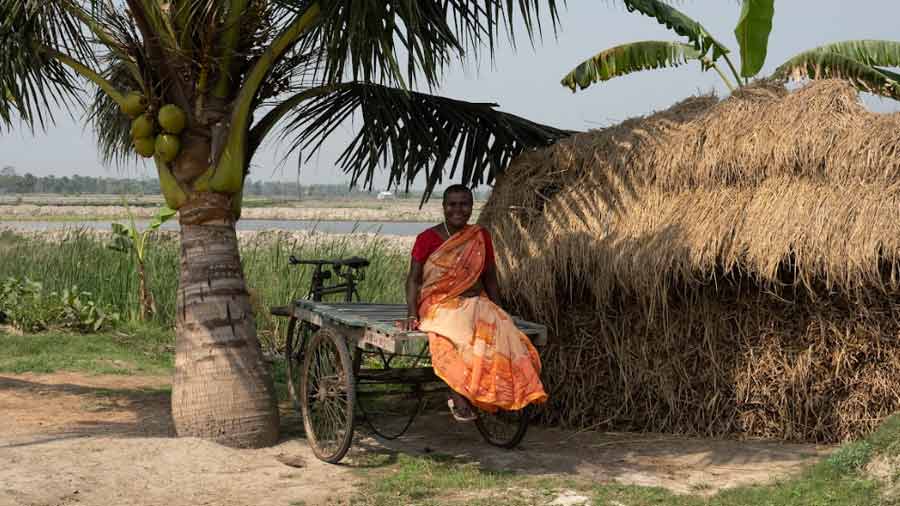They called her Alo. When they found her in 2010, she was suffering from schizophrenia and had maggots all over her body. She spoke a tribal language but couldn’t say where she was from. Twelve years later, Alo still has symptoms of residual schizophrenia but is overall functional and does all her chores and more without being asked. In March, 22 years after she went missing from her home in Chakradharpur, she was restored to her family — a husband she recognised and a son she didn’t. Alo went back to attend her son’s wedding where she participated in the rituals, partook in household chores and was welcomed back with fanfare.
Tripti was confused, disoriented and wandering aimlessly when they found her. She was abandoned by family after being discharged from a psychiatric unit. Now she is employed as the house mother of the place she stays in and is a decision maker for daily household issues. She learned quilting and has a regular income from it and is on very little medication.
Alo and Tripti are a part of a small community of women with mental illness who have either been discarded by their families or have gotten lost living in a commune set up in Berer Khal, Jibantala, in South 24 Parganas. Called A Village of Independent and Enterprising Women (A VIEW), this organisation was set up by psychiatrist Dr Suchandra Brahma with the goal of delivering a new approach to mental health built on a model of integrated services. It aims to rehabilitate mentally ill women locked in psychiatric wards in hospitals or unattended and /or discarded by their families, out into the open community.
The organisation at present caters to 21 patients, taking care of their medical needs, providing a safe environment for them to re-establish their self worth, teaching them the activities of daily living, and empowering them with skills to independently earn a living.
My Kolkata spoke to Brahma, who was schooled at St. Agnes Convent School, Howrah, and Calcutta Girls’ High School and did her psychiatry degree from Calcutta Medical College before moving to the US for a masters in psycho-pharmacology.
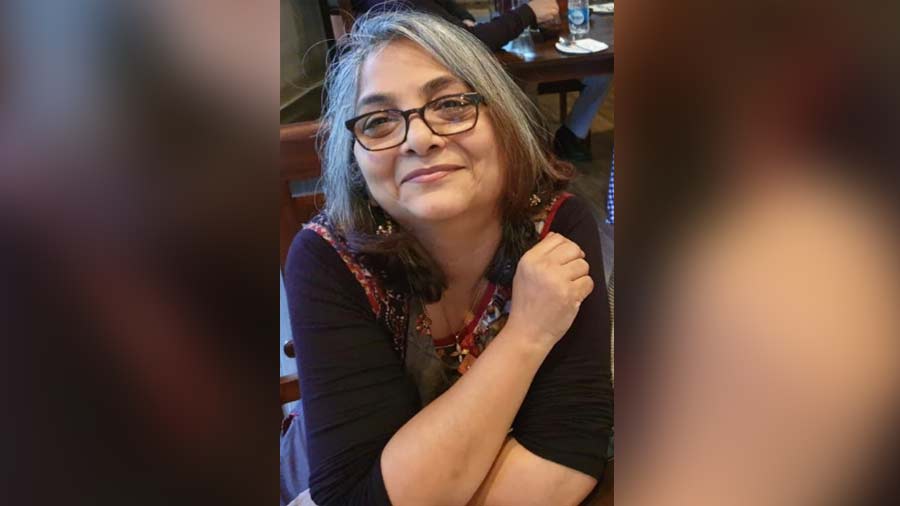
Dr Suchandra Brahma
How did the idea of A VIEW come about?
In 2001, right after 9/11, me and a friend of mine, who was also from Calcutta Medical College and settled in England, went on a trip to Kilimanjaro. While we were there, we started talking about mental health and how treatment in India is very different than where we came from.
In 1998, I came to Kolkata to do an externship in psychiatry at PG Hospital. That was when I actually realised the difference between the treatment in the two countries. Here, a lot of the women who were in the hospital got better with treatment but the hospitals were not able to track their families anymore. The addresses they gave were wrong, the names they gave were wrong. So they lived there, maybe till they died. They were housed, six or seven of them together, in places where the front is like a prison, like a cage. That was a very sad experience.
My friend, who is a gynaecologist, also had experience in dealing with people with mental health issues. So the two of us came up with a plan where people who were better after they had been treated and were in remission could have a different way of life. They should be in an open space, where they can live life “normally”. That was the premise.
When and why did you decide to come back to Kolkata?
I came back in 2003. The first reason was I wanted to put our plans about giving a better life to people with mental health issues into action. My children Arpan and Anindya were very young and I wanted them to be in Kolkata and be with their extended family and know their grandparents. The third reason was that I was just plain lazy and did not want to have to work, keep a home, bring up my children all on my own (laughs).

The acute unit of A VIEW is built on three acres of land with ponds and paddy fields
When did you start A VIEW?
It took us a few years to get through all the bureaucratic red tape and start this non-profit organisation, which was registered in 2007. It took us another two years after being registered to be able to physically start our work. When we started in 2010 there was just me and two part-time social workers, one of whom had psychiatric experience. We had two board members, my brother and my sister.
Our first set of patients were from an organisation in Kolkata called Iswar Sankalpa. They didn’t have an in-patient unit at that time, only a drop-in centre. So when they saw women who were doing well after being treated on the streets, who came to the drop-in centre but had to go out to the streets again at night, they approached us and asked us if we would like to help some of them. At that time we had a place in Rajarhat, which was given to us free of charge. Then we had a leased space in Bagnan for five years where we set up our first unit. We moved from there to a permanent place in Jibantala, which is where we are now, in 2014.
This is our own land and we slowly started building on it. We now have one large semi-permanent living structure in the back, and two permanent structures in the front. It is a 3-acre land with three ponds, paddy fields, a patch to grow vegetables and a cow shed. It is like an integrated farm.
We always wanted a rural setting because the distractions are less. The pace at which life goes is slower and it is easier to adapt. Also you don’t have to have a hard routine. You can have your siesta time, get up early if you want to. Also there is less temptation to run away.
We were always sure that our unit was going to be in an unlocked setting. We don’t have locks and keys, we don’t chain people or keep them locked in. We do have a lock on the inside because we don’t want outsiders to come in. In the beginning we didn’t even have that, but in the evening people would come to see the “pagla garod”. So we decided to put in a lock on the gate to keep out that kind of intrusion.
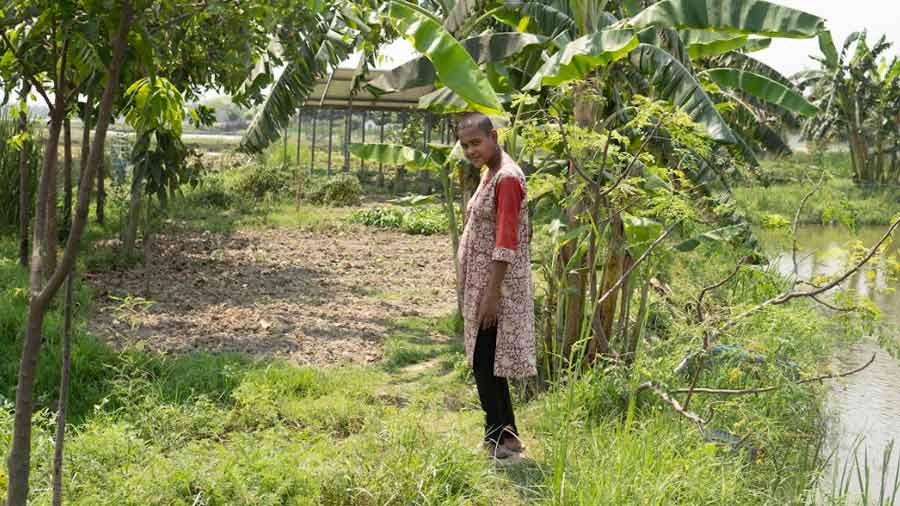
One of the residents of the acute unit of A VIEW
Where did you find residents?
We pick up women from the streets who need care and are willing to come with us. We have trained social workers who scout the city, especially areas that we know have a homeless population like train stations, near mosques or under bridges around hospitals. We connect with people who give them food because they trust these people and tell them to ask if they would be interested in medication. If they agree, we give them medication and then check up on them from time to time. Repeated visitation builds a certain kind of trust. Once they are a little less psychotic, a little less paranoid they start looking at the realistic problems of living on the streets. Then they are okay to come see where we want them to go. Sometimes they run away after being there for a few days. We can’t help everyone. We can only help those who want to be helped.
Other than that we have some partner organisations who we help with psychiatric care and they sometimes give us leads about people who are unclaimed in some centres for years.

Two other residents of the village
Can you take us through the process residents at A VIEW go through?
Once we get our residents, it takes about three to six months to stabilise them. Sometimes they are unable to remember or give us their names. So often we give them names. We get their medicals done and then slowly start them off with activities of daily living. First step is to teach them personal hygiene and grooming. After this they become part of the commune. They get chores. Then if someone has a knack for something they are given more training in that. After they become actively engaged in the community we start some kind of vocational training. Even if they can’t complete a product it helps to improve hand-eye coordination and motivation. It improves cognitive processes. To come to this place most of them take about a year.
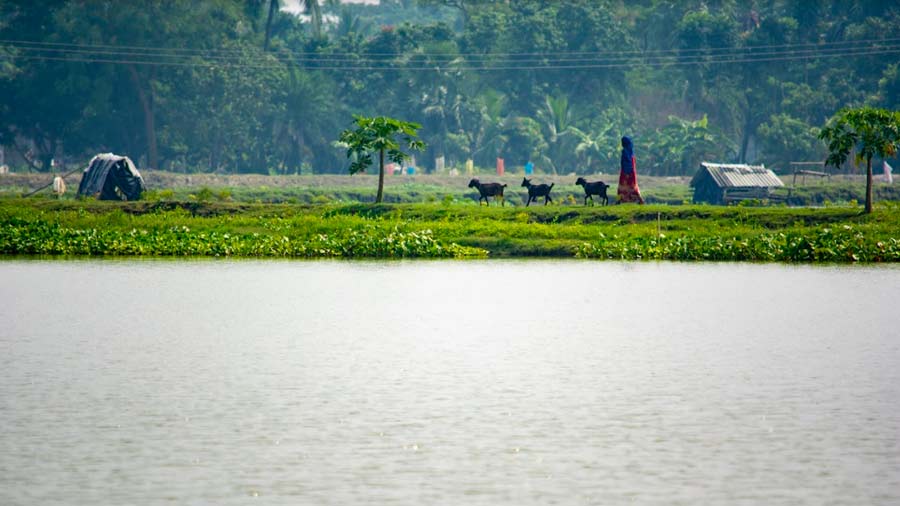
Animal husbandry is one of the skills taught to residents of the acute unit
How difficult is the process of restoring them with their families?
By the time they are slowly integrated into the community the residents start talking about their homes but it is often difficult to understand if they are talking about a village or a town or a train station. Sometimes they speak languages we don’t understand and that makes it even more difficult. So, this is where we have to do detective work. One social worker’s primary objective is to restore residents with their families. We try and find out if what they are talking about is a village or a thana and then use our networks to identify the place. Sometimes we have been able to identify the places within a year but the residents are not well enough.
In the past we have made the mistake of connecting with the families as soon as we have been able to locate them and they have wanted to pick them up right away and it has been a disaster. They call and complain that they are not being able to handle them. So, now we have slowed down the restoration process a little bit. We wait till they are stable and till we are able to get them Aadhar cards, bank accounts, ration cards, etc, which take a long time. With the work they do they are able to save some money in their bank accounts and that is an incentive for their families to take them back because they won’t become a burden immediately.
Can you share some stories that stand out?
In the first week of March we restored a woman who went missing in 2017. She used to speak Bundelkhandi and we couldn’t understand anything she said. She was also hearing impaired. She couldn’t tell us her name so we called her Nani, because she looked older. After the first three months of medication she became absolutely fine. She participated in all kinds of chores and could communicate through non-verbal language. She used to wear the sari in the Maharashtrian way so we realised she was probably from somewhere around that area. The social worker, Samit Chakraborty, managed to find out that her name was probably Tarabai and was able to identify the name of a railway station from all that she said. From the railway station we were able to connect with the local thana, who put us in contact with her family. Her name was Tarabai Burman. The family confirmed that she was missing and that the sarpanch of the village had forcefully made them perform the last rites as well! Her husband had died but she had two sons and two daughters. None of her children wanted to come and get her. It was her brother and sister-in-law who said that they were going to take her back. They came all the way. She was so happy because somebody understood her language after all these years. She went home on March 5.
Another person we restored in March this year was Parbati, who we rescued from the market near Ballygunge Station. She was a small, frail person. She was very quiet, but like Alo, she knew all the chores necessary in a house in the village. She was initially on antipsychotics but later she was only on an antidepressant and blood pressure medication. We brought her to our semi-independent unit in the city. She used to work as a household help in some houses and they all loved her. We found her family just before the lockdown and she only recognised her mother from a picture and no one else. She was hurt that no one from her family offered to come and get her. In February her niece sent us a letter inviting Parbati to the wedding of her nephew. Parbati was the only sister of six brothers. We sent a social worker with her because it was very far away, near the Odisha-Madhya Pradesh border. After the wedding there was a panchayat meeting and one of her brothers agreed to have her live with them. She had a savings of Rs 20,000 some of which we sent with her and the rest we said we would transfer after she opens a bank account there. She has now adjusted well to her family.
What happens to residents who cannot be restored to their families?
After residents at the acute centre become self-sufficient we shift them to a semi-independent unit in Naihati, where a person has given us a rent-free house. We have five residents there. We have someone like a house-mother who lives with them. There they learn how to live in an urban setting. Once they get used to it and become proficient we take them to an independent living centre, where they live absolutely on their own. They pool in money for all expenses in the household. Whatever is left they put it away in the bank. It is exactly how five roommates would live in a flat.
You split your time between Kolkata and the US, how difficult is that?
I spend six months in India and six months in the US. In the past it used to be difficult but now everything has become much easier to manage from across the world. I can do video consultation with my patients in Jibantala, which is a very rural place, from the US and I can see my private patients in the US sitting here if I need to.
I think I weirded out people in the US by saying, I have spent enough time here now I need to go back home! There are lots of people who want to come for a month or two to visit but not to really stay. But I like staying in India more than I like staying outside. A VIEW has become my identity.
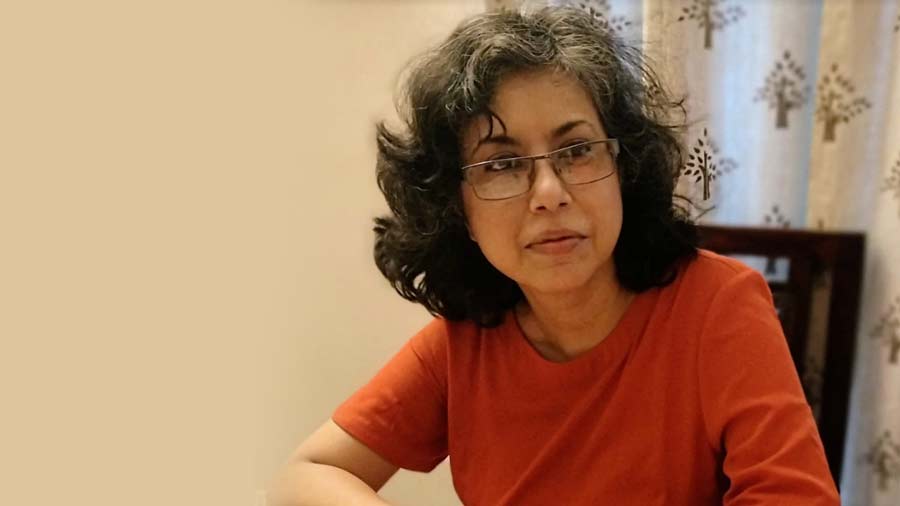
Dr Suman Dasaratharaman, who is an integral part of A VIEW
What next for A VIEW?
A VIEW couldn’t have come this far without the support of friends and family. At some point I want to find someone to take over from me. I don’t think we will be financially independent any time in the near future, so whoever takes over has to be somewhat like me and at least not take a salary.
We want there to be just one acute centre but we want more semi-independent and independent living units. We hope more people will donate houses for that. We don’t want the acute unit to become bigger because we don’t want to lose the personal touch. Right now I know them by name, know their stories and I don’t want to lose that.


